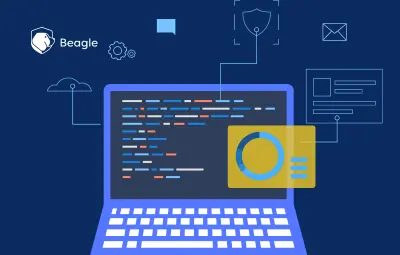
Broken access control vulnerability is a type of security flaw that allows an unauthorized user access to restricted resources.
By exploiting this vulnerability, attackers can circumvent standard security procedures and gain unauthorized access to sensitive information or systems.
Broken access control vulnerabilities are often caused by weak authentication and authorization mechanisms, allowing attackers to gain illegitimate privileges.
Prevention of such vulnerabilities is critical for preserving the security of your systems and data.
What is broken access control vulnerability?
Broken Access Control is a security vulnerability that occurs when a user can gain unauthorized access to certain parts of a system, such as files, directories, or functionalities, that they shouldn’t be able to access.
This vulnerability typically arises due to inadequate or improperly configured access controls within an application or system.
Key aspects of Broken Access Control vulnerabilities include:
1. Insufficient authorization checks
In systems with broken access control, there is often a lack of proper authorization checks.
This means that even if authentication is successful (i.e., the user logs in with valid credentials), the system fails to verify whether the user should have access to specific resources or actions.
2. Privilege escalation
In some cases, users with limited privileges can exploit broken access control to escalate their permissions and gain unauthorized access to sensitive areas of an application or system.
3. Data exposure
Broken Access Control can lead to data exposure, where an attacker can view or modify sensitive data, potentially compromising the confidentiality and integrity of the information.
4. Unauthorized actions
Users may be able to perform actions or operations for which they do not have the appropriate permissions. This can lead to actions that disrupt the system, violate data privacy, or compromise security.
5. Session management issues
Improper session management can contribute to broken access control vulnerabilities, as attackers may hijack valid sessions or manipulate session tokens to gain unauthorized access.
What is the impact of broken access control vulnerability?
Broken Access Control vulnerabilities can have severe consequences for both the security and functionality of a system or application. The impacts of such vulnerabilities may include:
1. Unauthorized access
Users can gain unauthorized access to restricted areas of an application, exposing sensitive data, functionalities, or administrative interfaces.
2. Data exposure
Attackers may view, modify, or delete sensitive data, potentially leading to data breaches and violations of data privacy regulations.
3. Privilege escalation
Users with limited privileges can exploit these vulnerabilities to elevate their access rights and perform actions beyond their intended permissions, potentially compromising the integrity of the system.
4. Data loss or corruption
Unauthorized access can result in data loss, data corruption, or data manipulation, leading to inaccurate or unusable information.
5. Account compromise
Broken Access Control can allow attackers to hijack user accounts or sessions, taking over legitimate users’ identities.
6. Security bypass
Attackers can circumvent security mechanisms, such as authentication and authorization, to carry out malicious activities without detection.
7. Disruption of service
Unauthorized actions or data exposure can disrupt the normal functioning of the application, affecting its availability and reliability.
8. Financial loss
Data breaches or unauthorized access may lead to financial losses, legal liabilities, and damage to an organization’s reputation.
9. Regulatory non-compliance
Violations of data privacy regulations, such as GDPR or HIPAA, due to data exposure can result in legal penalties and fines.
10. Reputation damage
Security incidents resulting from Broken Access Control can erode trust in an organization’s products or services, causing customers and partners to lose confidence.
11. Operational overheads
Remediation efforts, incident response, and recovery can be resource-intensive, requiring time and financial investments.
12. Long-term consequences
A lack of proper access control can leave an organization vulnerable to ongoing security risks and attacks, even after initial incidents are resolved.
To mitigate the impacts of Broken Access Control vulnerabilities, it is crucial to implement robust access control mechanisms, conduct regular security assessments, and follow best practices in secure software development and system administration.
Additionally, organizations should stay informed about emerging threats and vulnerabilities to proactively address security risks.
How can you prevent broken access control vulnerability?
Preventing and mitigating broken access control vulnerabilities is crucial for ensuring the security of your web applications.
Broken access control occurs when a user can access functionality or data they are not authorized to access. Here are some ways to help prevent and mitigate this vulnerability:
1. Implement proper authentication
Ensure that user authentication is in place and requires strong, unique passwords. Implement multi-factor authentication (MFA) if possible.
2. Implement authorization
Clearly define and enforce user roles and permissions. Use the principle of least privilege (PoLP) to grant users the minimum level of access they need to perform their tasks.
Centralize authorization logic and avoid hardcoding permissions in your application.
3. Session management
Implement secure session management to prevent session hijacking and fixation attacks. Use unique session tokens for each user session. Set session timeouts and implement secure logout functionality.
4. Access control lists (ACLs)
Implement Access Control Lists to control who can access specific resources or perform certain actions. Regularly review and update ACLs as the application evolves.
5. Error handling
Be cautious with error messages. Avoid revealing too much information about the system’s internal structure or unauthorized data. Customize error messages to provide minimal information to users while logging detailed errors for administrators.
6. URL-based access control
Don’t rely solely on obscurity or unguessable URLs to protect resources. Always validate user permissions on the server-side.
7. Use session tokens and CSRF tokens
Include session tokens and anti-CSRF tokens in your application to protect against session fixation and cross-site request forgery attacks.
8. Security headers
Implement security headers, such as Content Security Policy (CSP) and X-Content-Type-Options, to mitigate various web vulnerabilities, including access control issues.
9. Testing and code review
Regularly conduct security testing, including penetration testing and code reviews, to identify and fix access control issues.
Use automated tools to scan for common vulnerabilities.
10. Incident response plan
Develop an incident response plan to react quickly to any access control breaches and minimize their impact.
By following these best practices and continuously monitoring and updating your application’s security measures, you can significantly reduce the risk of broken access control vulnerabilities and enhance the overall security of your web application.








